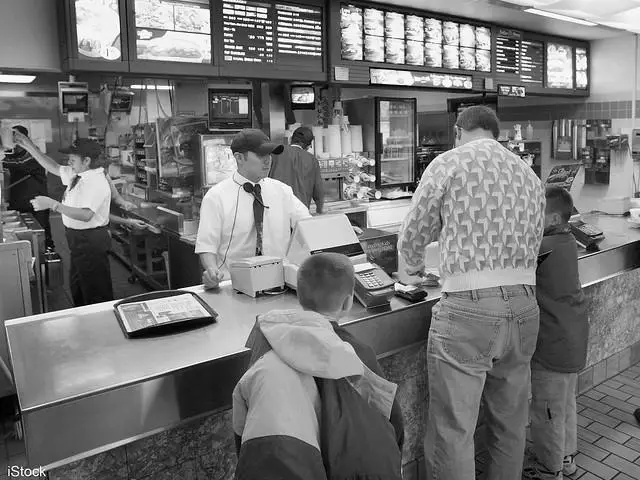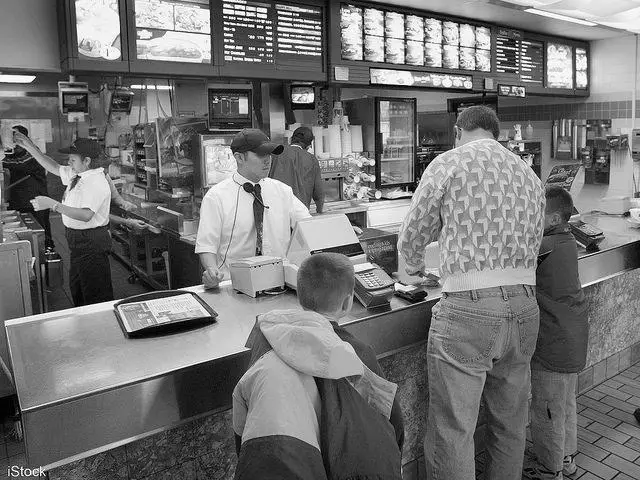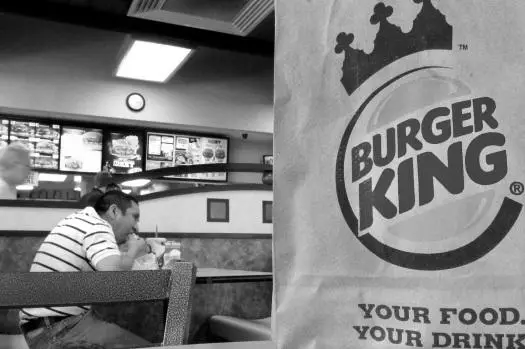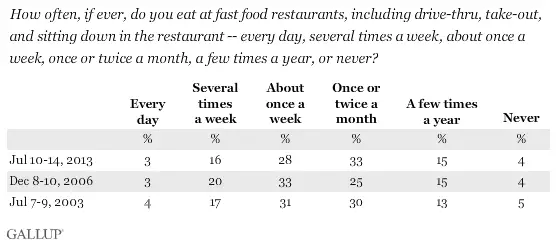According to a recent National Center for Health Statistics study, 85 million Americans eat fast food daily. This percentage is higher among those aged 20 to 39. But, the rate decreases as people grow older. Those aged 60 and older are the least likely to consume fast food.
High income
Fast food consumption is widely shared among Americans of all income levels, but those in the upper-income bracket are more likely to dine at fast food restaurants than their lower-income counterparts. In the United States, high-income adults eat fast food nearly four times as often as low-income adults. These high-income diners were equally likely to eat fast food for lunch or dinner, breakfast, and snacks.
Based on data from 8,000 American adults, the study examined how many times a person visited a fast food restaurant in the last seven days. It also included questions about household wealth, focusing on whether the person had investments or owned any property. The study divided respondents into ten deciles based on income and household assets. The lowest decile was composed of respondents with household incomes below $42,800. The middle three deciles comprised individuals with incomes between $42,800 and $105,000, while the highest deciles included those with revenues exceeding $105,000.
The study also examined the reasons people choose fast food restaurants. People from high-income neighborhoods were likelier to choose a fast food restaurant over a local street vendor. On the other hand, low-income communities are populated with relatively few individuals dining out at fast-food restaurants. In addition, low-income neighborhoods had fewer people eating out for lunch or dinner.
Fast-food chains target low-income neighborhoods. These neighborhoods lack access to healthy food options and are often less well-off than high-income neighborhoods. These consumers also tend to own cars and live in cities where fast-food restaurants are more prevalent. Therefore, it is imperative to consider this when choosing a location for a fast-food chain.

Obesity
While fast food is a popular, easy-to-find option, eating at these restaurants is not always the healthiest option. It can raise blood pressure and increase cardiovascular disease, so it is essential to know the health risks associated with eating fast food. In addition, eating at these restaurants is a bad combination for your waistline, as they tend to be high in fat and calories. Fortunately, some alternatives are more nutritious and satisfying.
According to Dr. Lawrence Cheskin, an associate professor at the Johns Hopkins Bloomberg School of Public Health and the director of the Johns Hopkins Weight Management Center, eating foods high in fat and sugar increases your risk of developing various chronic diseases. A diet rich in fruits, vegetables, and whole grains has the lowest health risks.
Among higher-income groups, fast food usage is higher than for lower-income groups. Fast-food eaters spend 42% of their time eating at fast-food restaurants compared to 36% of lower-income individuals. The consumption rate varies by age, and nearly forty-five percent of Americans aged 20 to 39 consume at fast-food restaurants at least once a week.
According to a National Center for Health Statistics survey, approximately 85 million adults in the United States consume fast food. Adults aged 20-39 and 40-59 were most likely to consume fast food. In contrast, older adults and women are less likely to consume fast food.
Fast-food consumption is associated with higher calorie intake, poor diet quality, and increased risk of heart disease and type two diabetes. Additionally, fast-food consumption is related to unexpected adverse effects, including eczema and pollen fever.

Diabetes
While eating out at fast food restaurants can be disastrous for a person with diabetes, you can make the experience more manageable by choosing healthy options. For example, avoid fried foods with excess fat and cheese and opt for vegetarian dishes or salads. It would help to prevent dessert pizzas full of refined starches and sugars. Also, avoid super-sizing your order. Instead, select salads that are low in carbohydrates and contain more protein than you expect.
The study’s authors found a significant correlation between fast-food restaurants and type 2 diabetes in areas with a high concentration of fast-food outlets. However, they noted that the study’s findings are not yet definitive because other factors may also be involved. The authors recommend further research to determine the causal relationship between fast food restaurants and diabetes.
The findings of this study should not be extrapolated to other populations. The study participants were primarily U.S. military veterans, so the results might not be generalized to other people. Veterans are more prone to obesity and diabetes and may not be representative of all types of Americans. Furthermore, participants in the study were primarily male and lived close to fast-food restaurants.
While fast food restaurants are convenient, they are also unhealthy. Aim to downsize your meals to reduce the amount of fat and sodium. You can also opt to eat grilled or broiled food when possible. In addition, you should limit the amount of mayonnaise and other high-fat sauces you eat. Additionally, avoid ordering large meals or single-patty burgers. Also, stay away from desserts, such as ice cream and pies.
In an extensive study of veterans, researchers discovered that fast-food restaurants were associated with a higher risk of type 2 diabetes. This association is held even in rural and suburban communities.

Heart disease
A new study has found that fast food restaurants may increase the risk of heart disease. The researchers looked at data from over 3100 heart attack patients and found that those living near fast food outlets were twice as likely to experience a heart attack. However, it’s unclear whether the availability of fast food is the leading cause of this association.
The study examined nine distinct fast-food chains based on their top sales and mapped their per-capita density for 380 regions in Ontario, Canada. Outcome measures were derived from hospital discharge abstracts and vital statistics data from 2001 and were adjusted for age, gender, and socio-economic status. The results showed a significant relationship between fast food restaurants and heart disease in communities with the highest density of fast food restaurants.
The study found that areas with higher concentrations of fast-food restaurants reported higher rates of heart attacks than areas with fewer fast-food outlets. The findings were presented at the annual Scientific Meeting of the Cardiac Society of Australia and New Zealand. Although other factors contributed to the risk of heart disease, the researchers’ findings are not surprising.
These results were similar in both rural and metropolitan areas of New South Wales, and they were consistent after adjusting for age, high blood pressure, and diabetes. While individuals should be responsible for their eating habits, public policy changes must combat this problem. Further, local areas should be better connected to healthy food stores to encourage healthy eating habits.
The researchers found a significant association between fast food restaurants and CVD and T2D. The study also found a link between FFR density and stroke prevalence.

